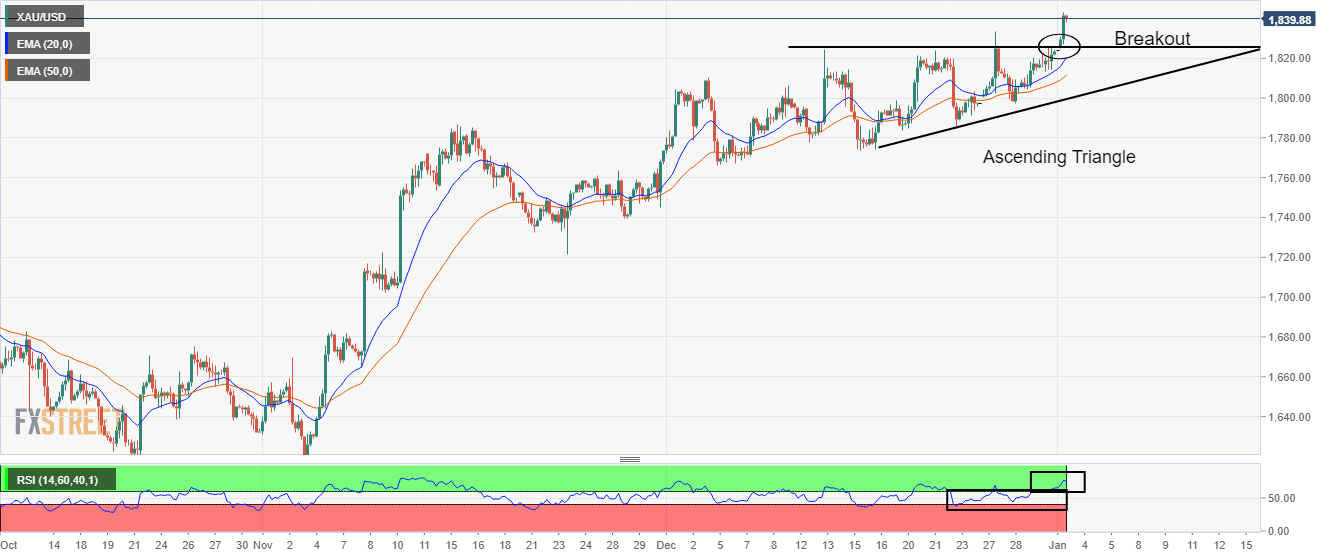- Gold price is looking to shift its business above $1,840.00 after an Ascending Triangle breakout.
- The US Dollar Index has attempted a recovery after dropping to near 103.15.
- Higher interest rates by the Fed could be responsible for weaker consensus for US ISM PMI data.
Gold price (XAU/USD) has displayed a sheer north-side move after surpassing the critical resistance of $1,823.00 in the Asian session. The precious metal is aiming to shift its auction profile above the $1,840.00 resistance amid a decline in safe-haven’s appeal.
A sheer recovery move in the S&P500 futures has shifted the traction towards the risk appetite theme. Meanwhile, the US Dollar Index (DXY) has attempted a rebound after dropping to near the crucial support at 103.15. Investors should brace for volatility in the FX domain ahead of the release of Wednesday’s United States ISM Manufacturing PMI data (Dec). According to the estimates, the economic data will drop to 48.5 vs. the former release of 49.0.
The reasoning behind lower consensus for ISM PMI data could be the higher interest rates by the Federal Reserve (Fed) due to which firms have postponed their expansion plans to avoid higher interest obligations.
Apart from the Manufacturing PMI, the release of the Federal Open Market Committee (FOMC) minutes will hog the limelight. Investors will keenly observe the economic projections and cues about the monetary policy outlook for CY2023.
Gold technical analysis
Gold price has delivered a breakout of the Ascending Triangle chart pattern formed on a four-hour scale. The horizontal resistance of the aforementioned chart pattern is placed from December 13 high at $1,824.55 while the upward-sloping trendline is plotted from December 16 low at $1,774.36.
Advancing 20-and 50-period Exponential Moving Averages (EMAs) at $1,820.00 and $1,812.07 respectively add to the upside filters.
Meanwhile, the Relative Strength Index (RSI) (14) has shifted into the bullish range of 60.00-80.00 from the 40.00-60.00 range, which indicates more upside ahead.
Gold four-hour chart






